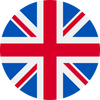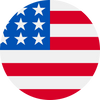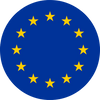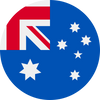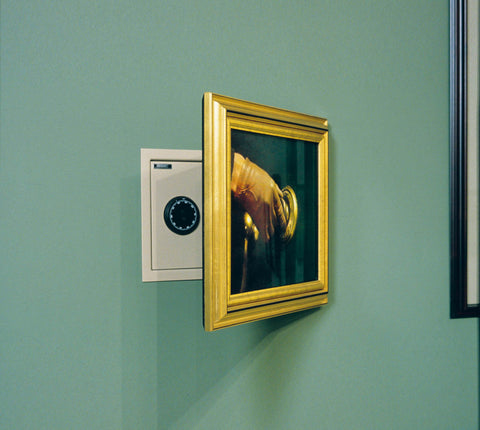
Let’s start at the beginning. How did you start your work on Chizu?
The project began when I saw the stains: the key images of Chizu.
When did you first encounter them?
I first saw the stains in July 1958, when I traveled to Hiroshima with Ken Domon. Domon’s book Hiroshima had just been published earlier in that year, and I was working as staff photographer for Shūkan Shinchō (Weekly Shinchō). I was assigned a feature photo story— we’d call them “gravure pages”—that was to retrace Domon’s steps through the making of his publication Hiroshima for the weekly.
There was an earlier story on Hiroshima published in 1957 by writer Daizō Kusayanagi. Kusayanagi was a freelancer of sorts, but he had been one of Shūkan Shinchō’s most influential writers and editors since its start. Kusayanagi had proposed a story on the Atomic Bomb Casualty Commission (ABCC). When a writer covers an important story, you need photographs, of course, to illustrate it. So, unless a staff photographer is assigned, an outside photographer is chosen to accompany the writer. Domon was chosen for Kusayanagi’s story on ABCC.
Were you present at the meeting when it was proposed, or did you hear about that feature story later on?
We photographers had separate weekly meetings from the editors. However, I must have heard about it the same day. Word traveled quickly at Shinchōsha. Perhaps I heard from Domon himself that he was assigned that story on ABCC. I used to spend a lot of time with Domon-san. He may have even asked me for insight on what Kusayanagi—the writer—was like. It was probably the first time Domon and Kusayanagi worked as a team. Kusayanagi’s story became Domon’s introduction to Hiroshima.
[…]

So, it was your visit to Hiroshima to photograph Domon that led you to the “stains.”
At some point after I was done shooting, I returned on my own to the Atomic Bomb Dome, probably on the same day that I’d first been there with Domon-san and photographed him on the spiral staircase. I felt unsatisfied, so I strayed and wandered around by myself. The landscape was nothing like it is now. There was no other place to go, since it was one of the few buildings in sight. The area was otherwise pretty empty.
I went back early in the evening and it might have been lightly raining when I reached the dome. Inside, it was damp, dark, there was a strange smell... my eyes took a moment to adjust before I noticed the stains. It was an unspeakably powerful moment. I felt like I had encountered this terrifying, unknown place. I had the illusion that I could almost hear faint voices merged with the wind and crackling sounds coming out of the walls. I believe that when one experiences an event as foreign and improbable as this, it is felt as a full sensory experience. New events like that for me are often connected with my senses of smell and hearing. When I encountered the stains, I felt electrified. It was unlike any previous images I had pictured in my mind of Hiroshima.

Had Domon failed to notice the stains?
Domon either didn’t notice the stains or wasn’t interested in photographing them. There’s no way he would have just overlooked them. He’s the kind of photographer who goes the extra mile to take a good photograph. Based on my understanding of Domon’s approach to photography, I think they just weren’t for him. But I had a different sense. I thought, this is everything in Hiroshima I need to photograph. I don’t need anything else.
Did you take any photographs on that trip, other than the ones you took of Domon?
No, I wasn’t prepared to do that. I had only one camera on me. So I decided to come back. The editorial process must have occupied me for some time afterwards. I believe it would have taken at least a week or so to process the film that I made of Domon in Hiroshima, and then to edit the story, before it was to be submitted for print. And once that was done, I knew I wanted to go back. But by that time, I was no longer focused on Hiroshima as much as I was on the stains. But getting there wasn’t easy. In comparison to the way we’d make the trip today, it took a long time in those days to get to Hiroshima. You would take the night train and arrive in the morning.
And you returned with a 4 x 5 view camera and a tripod?
Of course.

Excerpted from Joshua Chuang and Miyuki Hinton's interview with Kikuji Kawada in Chizu (Maquette Edition) by Kikuji Kawada (MACK, 2021).

Two hardback books, each with a jacket, plus one paperback booklet with leporello fold. Housed in a buckram bound hardback slipcase, protected in a printed cardboard mailer.
Bilingual: English, Japanese
19.7 x 29.9cm, 272 pages (total)
€125 £100 $150
The signed edition includes a unique slip stamped and signed by the artist in a range of colours and bound into the inside front cover of the booklet.
€145 £120 $170
